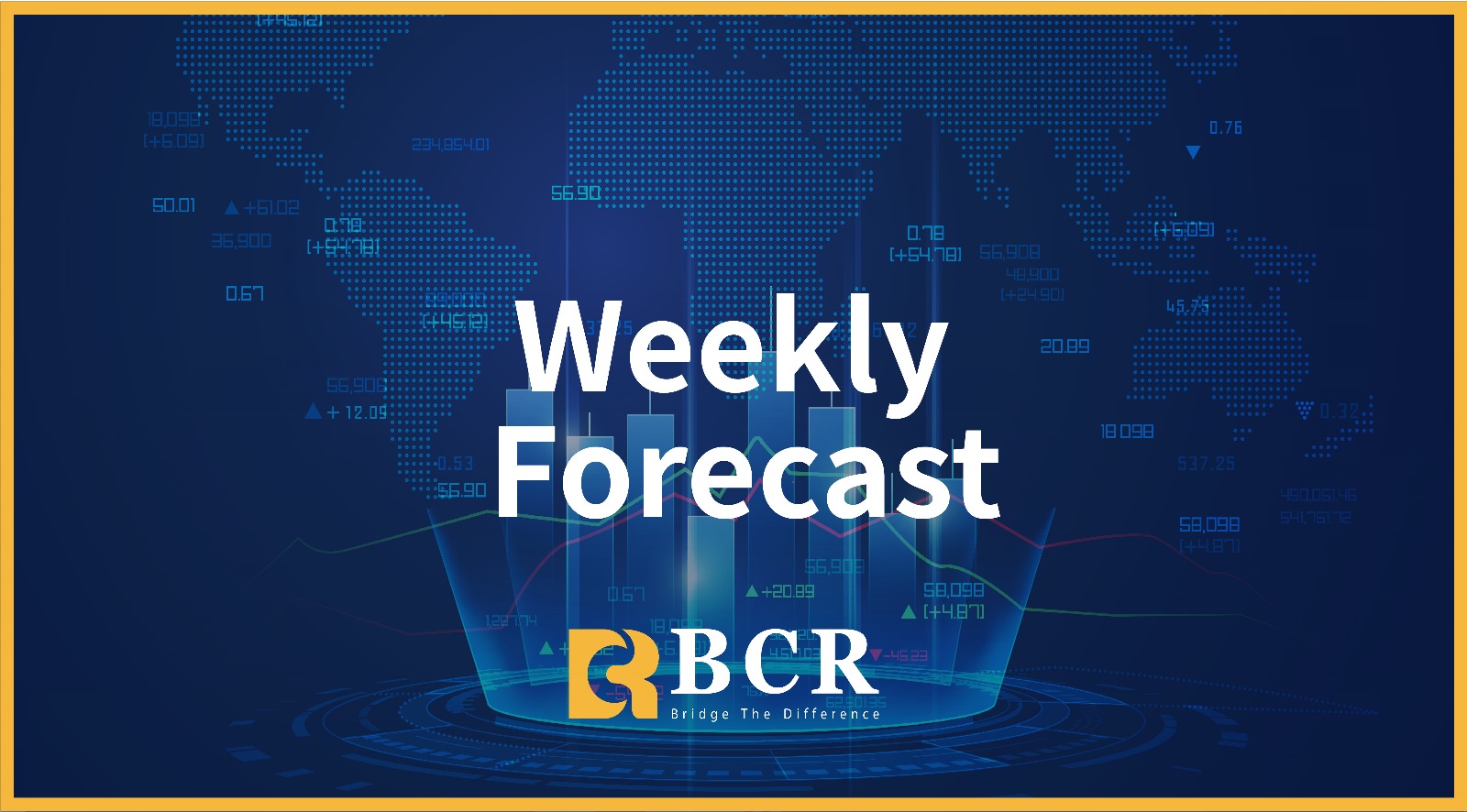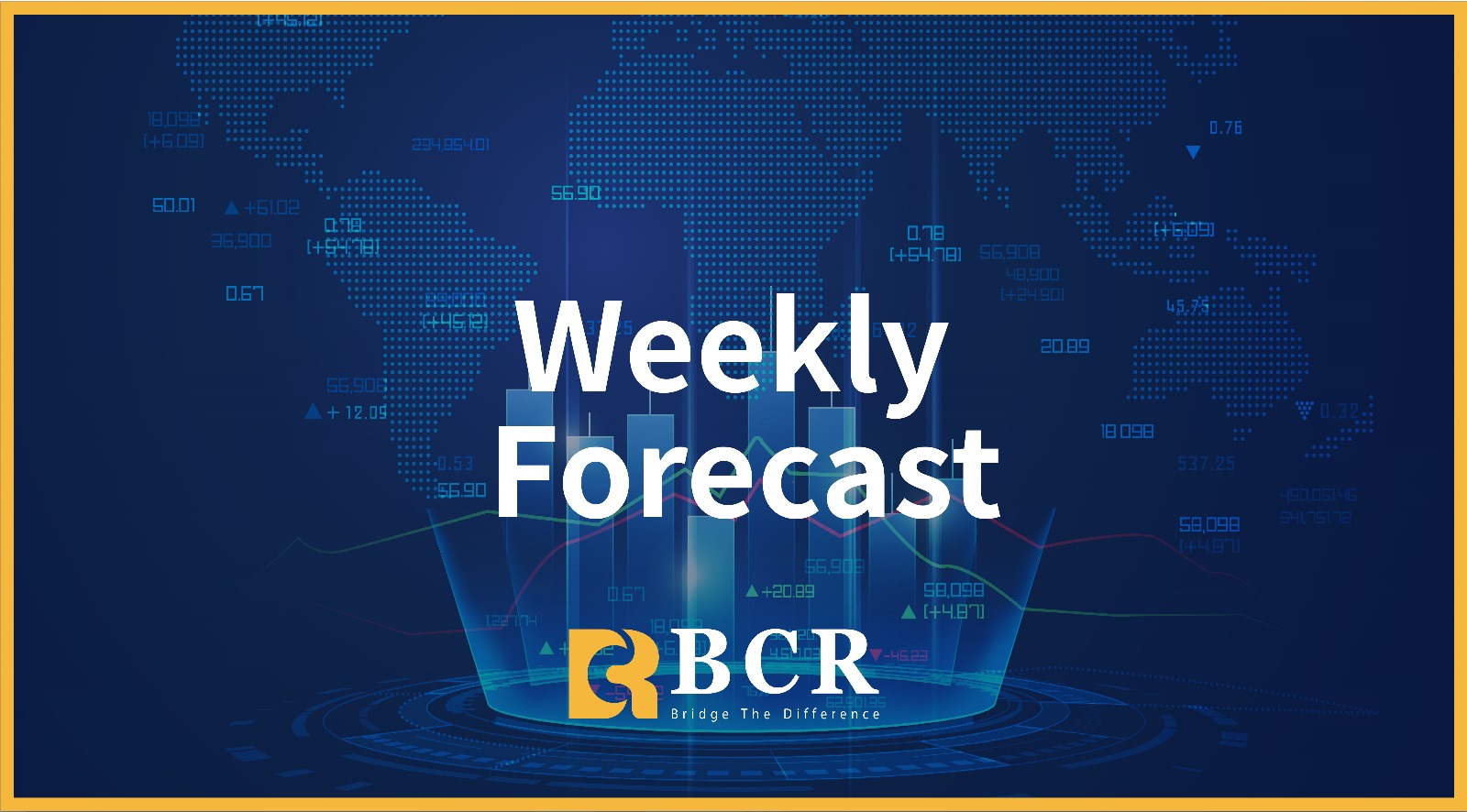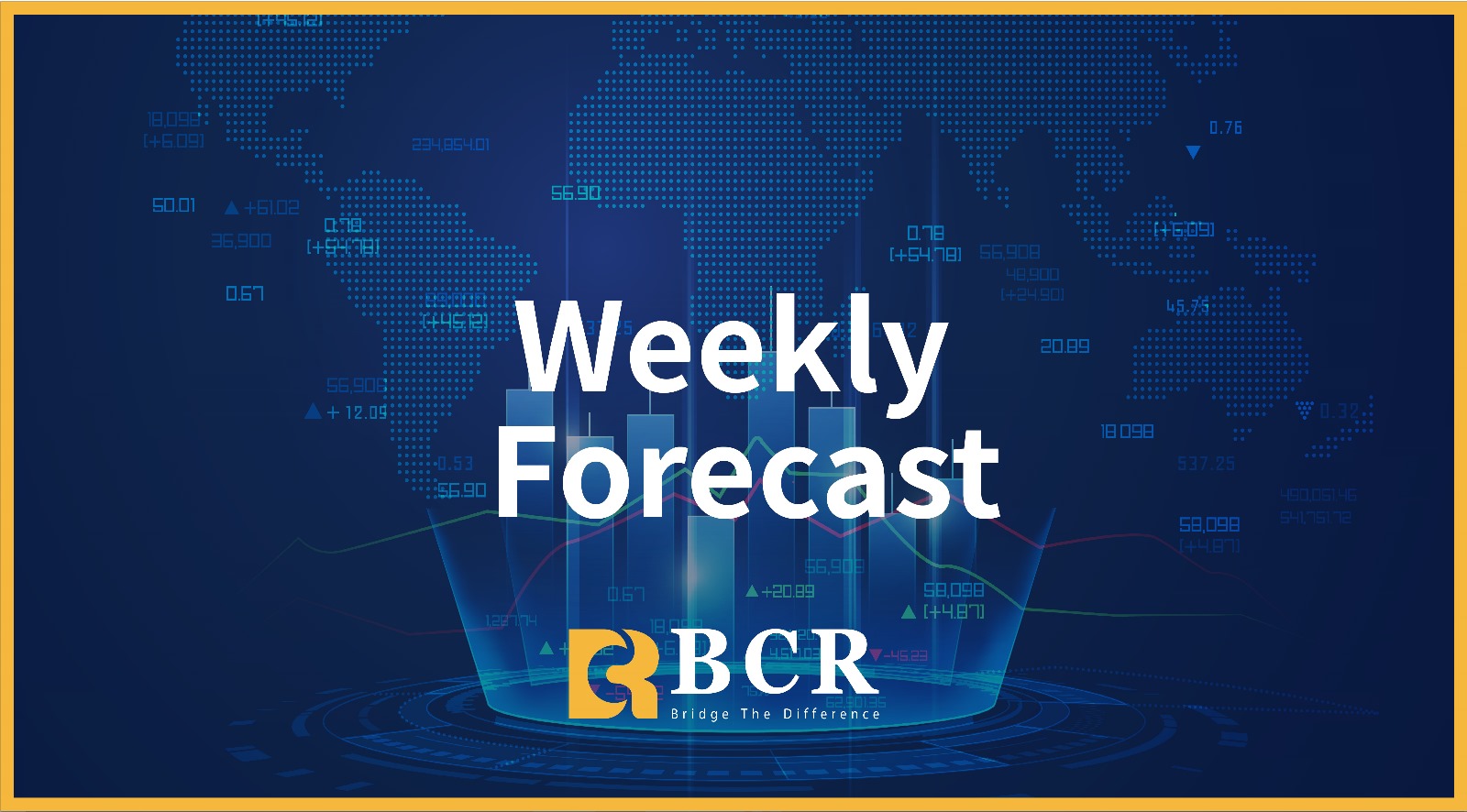





0
As summer draws to a close, financial market sentiment remains optimistic as the peak of uncertainty surrounding US trade policy appears to have eased. Although the July US non-farm payroll report showed significantly weaker-than-expected job growth, economic surprise indicators for major economies have otherwise stabilized at neutral or slightly positive levels. Risk assets such as equities have performed well, while most implied volatility indicators are hovering around their long-term median levels.
The updated tariff rate list took effect on 2020, now covering nearly all of the United States' major trading partners. Despite unusually low import volumes following Liberation Day in April, US importers paid more in tariffs in the first half of 2025 (January-June) than they would have for the entirety of 2024.
The coexistence of upside risks to inflation and downside risks to growth continues to divide central bankers globally. Last week, the Bank of England cut its policy rate by 25 basis points, but the decision was closer than expected, with four of the nine committee members voting against the cut. Across the Atlantic, the search for a successor to Federal Reserve Chairman Powell is also underway. After Treasury Secretary Scott Bessant indicated he was not considering a run, leading contenders include Christopher Waller and Kevin Walsh.
On the geopolitical front, Trump plans to meet with Russian President Vladimir Putin in the coming days to discuss the war in Ukraine, following US Special Envoy Witkoff's visit to Moscow last week. The exact time and location of the meeting remain unclear, but we remain skeptical of a major breakthrough. Last week (August 7), the US imposed an additional 25% tariff on India to curb its imports of Russian oil.
Last Week Market Performance Review:
Last weekend, all three major US stock indices closed higher. The Nasdaq Composite Index hit a new record closing high for the second consecutive day, and the S&P 500, led by technology stocks, recorded weekly gains, moving it just shy of its all-time high. The Dow Jones Industrial Average closed up 206.97 points, or more than 1%, at 44,175.61; the S&P 500 rose 49.45 points, or 1.05%, to 6,389.45; and the Nasdaq Composite added 207.32 points, or 3.0%, to 21,450.02.
Spot gold prices were essentially flat on Friday at around $3,400 per ounce, near a two-week high, while December gold futures in New York soared to an intraday record high of $3,534 per troy ounce. For the week, spot gold rose nearly 1%, marking its second consecutive weekly gain, supported by trade uncertainty, the threat of renewed tariffs, and rising expectations of a Federal Reserve rate cut.
Silver traded above $38 per ounce and was expected to rise about 3% this week, as uncertainty surrounding US rate cuts and new tariffs boosted demand for the precious metal. Markets weighed the possibility that Federal Reserve Governor Christopher Waller might be chosen by President Trump to lead the central bank, reinforcing expectations for looser policy.
Last week, the US dollar index fell to around 98.25, a drop of nearly 0.8%. It came under pressure amid Fed personnel changes and rising expectations of rate cuts, though it rebounded slightly on Friday. Market concerns over the Fed's independence and future policy path have intensified, and this week's inflation data will be a key indicator. Investors will need to closely monitor the data and internal developments within the Fed for further direction for the dollar.
The euro fell 0.21% to $1.1640. With inflation stabilizing at the ECB's current level, the central bank may hold off on cutting interest rates in September. The dollar rose 0.41% against the yen to 147.71. Bank of Japan policymakers debated the possibility of resuming rate hikes, with one policymaker suggesting a hike this year. The summary of the July meeting indicated an increased likelihood of a near-term increase in borrowing costs.
The British pound rose 0.06% to $1.3450, having earlier hit a two-week high of $1.3458. The Bank of England cut interest rates on Thursday, but the decision was passed by a narrow 5-4 vote, signaling a lack of confidence in easing policy. The Australian dollar held onto recent gains around $0.6518 and was on track for a 0.8% weekly gain, driven by a weakening US economy and growing market expectations for a Federal Reserve rate cut, which weighed on the dollar.
WTI crude oil closed flat at $62.70 a barrel on Friday, near a three-month low, and posted a weekly loss of over 5.50%, largely due to growing concerns about increased US tariffs and a potential meeting between Presidents Trump and Putin. The newly implemented US tariffs, which took effect on Thursday, have heightened concerns about slowing economic growth and weakening crude oil demand.
Bitcoin rose nearly 2% to above $116,700 before the weekend, shaking off the previous week's market jitters and reclaiming $117,500 following President Donald Trump's surprise nomination of economist Stephen Milan to the Federal Reserve Board. Bitcoin entered a bullish consolidation phase after reaching a record high of $123,000 and is currently trading at $116,749, temporarily reclaiming the range it had held for much of July.
The 10-year U.S. Treasury yield rose for the fourth consecutive trading day to 4.27% on Friday, after hitting a three-month low on Monday, as traders weighed the Fed's changes, new tariff threats, and expectations of another U.S. interest rate cut. Meanwhile, last week's 10-year and 30-year bond auctions indicated waning demand for U.S. debt. Traders now turn their attention to next week's CPI report and other key releases for fresh insights into the state of the U.S. economy.
Weekly Market Outlook:
After last week's wild swings, markets are heading into a data-light week, but with high policy focus. US stocks have just experienced a double whammy of technical breakdowns and sentiment-driven pullbacks, while defensive assets like gold and bonds are beginning to attract investors. This week, the market will be in a sensitive state of "awaiting confirmation"—waiting for further clarity on the Fed's policy signals, awaiting further verification during earnings season, and waiting to see if a technical recovery can be achieved.
Thus, this week's trading strategy should focus on three key axes: Tuesday's CPI, Thursday's PPI/initial claims, and Friday's retail sales/industrial output/Michigan data. Dynamically adjust the direction and exposure of the US dollar and front-end interest rates. For the British pound and the euro, consider the relative value of UK GDP and Eurozone GDP revisions/industrial output. For the Japanese yen, watch Wednesday's CGPI and Friday's Japanese GDP for potential disruptions to the US-Japan interest rate differential narrative. For the Australian dollar and the Norwegian krone, focus on the option-based expression of "central bank divergence + expectation gap."
Market focus on Fed personnel changes; the US dollar hovers at a low level.
The US dollar is facing multiple pressures, with market sentiment fluctuating further due to expectations of Fed personnel changes and the Bank of England's unexpectedly hawkish rate cut. The US dollar weakened last week, with the US dollar index falling to a narrow range around 98.00 and set to post a weekly loss. Meanwhile, the British pound remained resilient following the Bank of England's rate cut, holding onto a two-week high. The euro and other major currencies also exhibited mixed trends, influenced by both geopolitical and economic data.
The dollar has fallen since last week's July jobs report, which showed fewer jobs added than expected, and previous months' job growth was also significantly revised downwards. Among fund managers surveyed, shorting the dollar remains the most confident trading strategy for the remainder of the year.
The dollar's weakness is largely due to the market's reassessment of the Federal Reserve's future policy direction. In addition to monetary policy uncertainty, geopolitical factors have also become a significant driver of currency market volatility. The Kremlin's announced summit plans have thrust geopolitics into the market spotlight, making it a key variable in currency market movements heading into the weekend. Geopolitical uncertainty tends to exacerbate risk aversion, profoundly impacting the performance of major currencies like the US dollar and the euro.
Driven by the dual forces of the trade war and expectations of rate cuts, gold prices broke through the $3,400 mark.
Before the weekend, gold prices continued their upward trend, with spot gold breaking through the psychologically important $3,400 mark, reaching a high of $3,409 per ounce in over two weeks. Safe-haven demand was the core driver of gold's rise. Heightened global trade tensions, weak US labor market data, and growing expectations of a Federal Reserve rate cut all provided strong support for gold. Geopolitical uncertainty also fueled the gold price rally.
Ongoing trade tensions were one of the main factors driving safe-haven demand. As a traditional safe-haven asset, gold attracted significant inflows amidst growing global economic uncertainty. This price performance reflects the market's heightened awareness of the potential long-term economic impact of the trade war.
Trump has repeatedly criticized Powell's conservative stance on rate cuts, while Waller, considered a leading candidate to succeed current Chair Powell, favors a more accommodative monetary policy, which is positive for the gold market. Waller's potential appointment could stabilize long-term yields and support dollar inflows, but in the short term, market optimism about rate cuts will continue to dominate gold prices.
In the short term, gold prices will continue to be driven by a combination of trade tensions, expectations of rate cuts, and geopolitical risks. Trump's tariff policy could lead to further adjustments in global supply chains, pushing up inflation expectations, and thus supporting gold. Furthermore, with the near certainty of a September rate cut by the Federal Reserve, market expectations of loose monetary policy will continue to depress the dollar and bond yields, creating a favorable environment for gold prices.
Looking ahead, three major catalysts warrant close attention: potential fluctuations in policy expectations triggered by the Fed Chair nomination hearing on August 21st, the specific implementation of retaliatory tariffs against the US by countries such as India, and potential energy market volatility following the Putin-Trump meeting. Until these variables become clear, gold's price fluctuations around the $3,400 mark may become the new normal, but each pullback is likely to attract more safe-haven funds. In this summer of uncertainty, gold may be experiencing another highlight moment.
Concerns about a global trade war are putting pressure on oil prices, which continue to decline.
A new round of tariffs imposed by the United States on several trading partners officially took effect last Thursday, raising concerns about weakening global economic activity and weighing on the outlook for oil demand.
In addition to the impact of tariffs, OPEC+'s decision last weekend to fully lift its deepest production cuts ahead of schedule also undermined the oil market. Originally planned to be implemented gradually, the policy will be fully lifted by September, raising concerns about a renewed oversupply.
Furthermore, shifts in the diplomatic situation between Russia and the United States have exacerbated market uncertainty. The Kremlin confirmed last Thursday that Russian President Vladimir Putin will meet with US President Donald Trump in the coming days. Markets are hoping for a diplomatic solution to the Ukraine situation, which has dampened safe-haven demand for crude oil.
The current downward trend in oil prices is primarily driven by the dual influence of trade concerns and OPEC+'s policy shift. While the potential for US-Russia engagement may lead to some easing of geopolitical tensions, the shadow of slowing global economic growth is profoundly altering market sentiment regarding energy demand.
Against this backdrop, a significant rebound in oil prices is unlikely in the short term, and caution is warranted regarding further impacts from macroeconomic data and policy developments. Unless WTI crude oil can sustainably break through $65.00, downside risks remain. The overall market tone remains cautious, with traders awaiting clearer policy signals before betting on a sustained oil price rebound.
Conclusion:
Summer liquidity contracted, but this week's macroeconomic triggers remain intense. Market pricing will revolve around the framework of "data first, central bank support, and geopolitical disruptions." This week is a classic example of the intertwining forces of "data, central bank, and geopolitics." For professional traders, the key is not betting on single points, but building repeatable position management and risk control mechanisms around key nodes: deleveraging before events, leveraging options during them, and following the trend afterward. By simultaneously tracking the inflation path and employment gap, and incorporating central bank communication and personnel variables into risk premium assessments, pricing of the US dollar and interest rates will be more structured and strategy execution will be more resilient to noise.
Overview of Important Overseas Economic Events and Events This Week:
Monday (August 11): US New York Fed One-Year Inflation Expectations for July (%)
Tuesday (September 12): Australia ANZ Consumer Confidence Index for the week ending August 10; UK June Unemployment Rate (ILO Standard) (%); Eurozone August ZEW Economic Sentiment Index; US July CPI Annual Rate (Unadjusted) (%); Reserve Bank of Australia (RBA) Interest Rate Decision; RBA Governor Bullock Holds Monetary Policy Press Conference
Wednesday (August 13): US EIA Crude Oil Inventory Change for the week ending August 8 (10,000 barrels), US August IPSOS Main Consumer Sentiment Index (PCSI); IEA Monthly Crude Oil Market Report
Thursday (August 14): Australia July Seasonally Adjusted Unemployment Rate (%); Australia July Employment Change (10,000 people); UK June Seasonally Adjusted GDP Estimated Annual Rate (%); Revised Eurozone Q2 Seasonally Adjusted GDP Rate (%); US July PPI annual rate (%); US initial jobless claims for the week ending August 9 (10,000); Bank of Canada releases monetary policy meeting minutes.
Friday (August 15): Japan's second-quarter seasonally adjusted real GDP preliminary quarterly rate (%); US August New York Fed Manufacturing Index; US July Import Price Index monthly/annual rate (%); US July Retail Sales monthly/annual rate (%); US July Retail Sales Control Group seasonally adjusted monthly rate (%); US July Industrial Output monthly rate (%); US August University of Michigan Consumer Confidence Index preliminary value.
Disclaimer: The information contained herein (1) is proprietary to BCR and/or its content providers; (2) may not be copied or distributed; (3) is not warranted to be accurate, complete or timely; and, (4) does not constitute advice or a recommendation by BCR or its content providers in respect of the investment in financial instruments. Neither BCR or its content providers are responsible for any damages or losses arising from any use of this information. Past performance is no guarantee of future results.
Lebih Liputan





Pendedahan Risiko:Instrumen derivatif diniagakan di luar bursa dengan margin, yang bermakna ia membawa tahap risiko yang tinggi dan terdapat kemungkinan anda boleh kehilangan seluruh pelaburan anda. Produk-produk ini tidak sesuai untuk semua pelabur. Pastikan anda memahami sepenuhnya risiko dan pertimbangkan dengan teliti keadaan kewangan dan pengalaman dagangan anda sebelum berdagang. Cari nasihat kewangan bebas jika perlu sebelum membuka akaun dengan BCR.